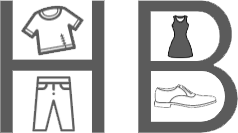In the world of fashion, there are various dress codes that define different occasions. Two of the most common dress codes are casual wear and formal wear. Understanding the difference between casual and formal wear is essential to dress appropriately for different events and situations. In this article, we will explore the characteristics of casual and formal wear, highlighting their distinctions and providing guidance on when and how to wear each style.
What is the Difference Between Casual and Formal Wear?
Casual Wear:
Casual wear refers to clothing that is relaxed, comfortable, and suitable for informal settings. It is typically worn in social gatherings, casual outings, or everyday activities. Casual wear offers more freedom in terms of style, fabric, and color choices compared to formal wear. It allows individuals to express their personal fashion preferences while maintaining a relaxed and laid-back appearance.
Characteristics of Casual Wear:
-
Comfort: Casual wear prioritizes comfort above all else. It includes loose-fitting garments made from soft and breathable fabrics, such as cotton, linen, or jersey.
-
Informality: Casual wear embraces a more relaxed and informal style. It often includes clothing items like t-shirts, jeans, shorts, sundresses, and sneakers.
-
Versatility: Casual wear offers versatility in terms of mixing and matching different pieces. It allows individuals to create unique and personalized outfits based on their personal style and preferences.
-
Minimalist Aesthetics: Casual wear tends to have a more minimalist and understated aesthetic. It focuses on simplicity and effortless style rather than elaborate details or embellishments.
Formal Wear:
Formal wear, also known as dressy attire, is appropriate for formal events, ceremonies, and occasions that require a more sophisticated and polished look. It often follows specific dress codes, such as black-tie or white-tie, which dictate the level of formality and the specific garments to be worn.
Characteristics of Formal Wear:
-
Elegance: Formal wear exudes elegance and refinement. It typically includes tailored garments that enhance the wearer's silhouette, such as suits, tuxedos, evening gowns, and formal dresses.
-
Formal Dress Codes: Formal wear adheres to specific dress codes, which provide guidelines for appropriate attire. These dress codes may require specific colors, fabrics, and accessories, ensuring a cohesive and polished appearance.
-
Attention to Detail: Formal wear pays meticulous attention to detail. It often features intricate embellishments, luxurious fabrics like silk or velvet, and fine craftsmanship.
-
Accessories: Formal wear is often accompanied by accessories that enhance the overall look. Examples of formal accessories include bowties, neckties, cufflinks, elegant jewelry, and formal handbags.
FAQs About Casual and Formal Wear:
-
Q: Can I wear casual clothes for a formal event? A: It is generally not advisable to wear casual clothes for a formal event. Formal occasions require a more polished and sophisticated look, which can be achieved by wearing appropriate formal attire.
-
Q: What should I wear for a casual outing? A: For a casual outing, opt for comfortable and relaxed clothing such as jeans, t-shirts, casual dresses, and sneakers. Remember to consider the weather and the specific activities you will be engaged in.
-
Q: Are there any specific rules for formal wear? A: Yes, formal wear often follows specific dress codes, such as black-tie or white-tie. These dress codes provide guidelines for appropriate attire, ensuring a cohesive and formal appearance.
-
Q: Can formal wear be stylish and fashionable? A: Absolutely! Formal wear can be stylish and fashionable while still adhering to the dress code requirements. By selecting well-fitted garments, paying attention to details, and choosing accessories wisely, you can create a fashionable formal look.
-
Q: Is it acceptable to wear casual wear to work? A: The acceptability of casual wear in the workplace depends on the company's dress code policy. Some workplaces embrace casual attire, while others maintain a more formal dress code. It is essential to adhere to your workplace's guidelines regarding appropriate attire.
-
Q: Can I mix casual and formal wear together? A: Mixing casual and formal wear can be done to achieve a smart-casual look. However, it requires careful consideration and balancing of elements to ensure a harmonious blend of styles.
Conclusion
Understanding the difference between casual and formal wear is crucial for dressing appropriately in various situations. Casual wear allows for a relaxed and comfortable style, perfect for informal settings and everyday activities. On the other hand, formal wear showcases elegance and sophistication, suitable for formal events and ceremonies. By following the guidelines and dress codes associated with each style, you can confidently select the appropriate attire for any occasion.
Remember, when it comes to fashion, expressing your personal style while respecting the occasion's requirements is the key to achieving a balanced and fashionable look.





















































